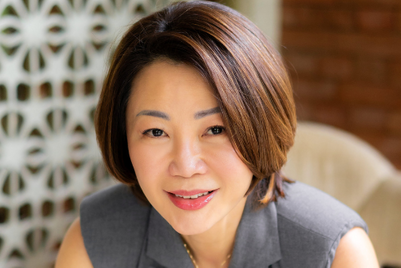
When Amplifi China launched a white paper report on mobile native ads in Shanghai last month, its theme was 遇见“隐”响力 (yu jian yin xiang li), punning on “隐” (yin) which means “hidden” in Chinese against 影响力 (ying xiang li, influence).
While native ads and sponsored content are sometimes used interchangeably, the former by its very definition resembles the editorial of the platform it is served and is less intrusive. “Intrusion” is the keyword here because gone are the days when advertisers believe bigger is better, but the demise of display banner ads may be coming soon. Chinese consumers still have to put up with at least 60 seconds of pre-roll ads that run on most of the sites they frequent.
“The question on whether an ad is native is less important for traditional media, but it is very relevant for mobile ads since mobile devices have become such an intimate part of our daily lives,” said Micro Cao, general manager of customer marketing at Weibo, at the venue of the launch. “When consumers look at ads on their phones, it should be a relaxing experience. They should not be expected to do much except scrolling up and down on the screen,” Cao added. The microblogging site is Amplifi’s publishing partner for the study into mobile native ads; together with Baidu, Xiaomi, Tencent, UC and Yidian Zixun.
Meg Chen, executive vice president, digital development, DAN China, told Campaign Asia-Pacific that the network hopes to learn more about the mobile behaviour of Chinese consumers through collaboration with media partners. Tencent-owned platform WeChat is reported to have 938 million active monthly users, surpassing Weibo's popularity in recent years. The mircoblogging site, meanwhile, has less than half of the number with 340 million active users for Q1 this year.

Needless to say, audience data is highly critical in effective delivery of ads to the targeted audience for all forms of advertising. “As publishers, we have in hand browsing data which could help determine the area of interest of a specific audience,” said Fu Jiren, vice president of Beijing Particle Information Technology, the company that runs aggregate news site Yidian Zixun.
Yet the collaboration is also based on a simple premise as Chen pointed out that consumers of brands and social media users are both the same people. “The way we consume media has evolved greatly. Looking at what happened last year, OTT recorded a huge growth in traffic. What we want to do is to study the changes in mobile behaviours,” said Chen who also heads global media partnerships for Amplifi China.

What do we know about Chinese mobile behaviour:
- More than 70 percent read
- 82.2 percent consumes news
- Average time spent on mobile news consumption in a day: 48 minutes
- 67.5 percent transfers money
- 67.3 percent listens to music
- 71.9 percent watch video
Data reported on Dentsu’s white paper report on native mobile ads is drawn from various sources.
Going native
According to the white paper report, native ads first surfaced on BAT platforms as early as 2012. Newsfeed ads have been broadly agreed as the most common form of mobile native ads; Dao Feng, Tencent’s general manager of channel business department revealed that native ads are usually three times the price of display ads. “Some may think that as long as it is in a news feed format, it is a native ad. But it shouldn’t be so, storytelling and getting the right content should be the way the go for native ads,” said Dao.
Silver Sun, VP, integrated marketing at Youku Tudou, concurred: “Every piece of ad is of course content. But for native ads, it is more about experience and achieving the desired effects. It doesn’t matter what IP it appears on, it is actually a more complicated product.”
Whither measurements
While mobile native ads will be more widely adopted as the market matures, mobile native ads may not always help advertisers see tangible ROIs. A study carried out by Dentsu and third-party tracking firm AdMaster firm shows that the CTR for newsfeed ads is 0.50 percent compared to 0.65 percent for video ads. However, newsfeed ads show better results than video ads in terms of engagement frequency, sharing frequency and average page views. Both AdMaster and Nielsen are third-party verification partners for DAN’s study to help develop metrics for mobile native ads.
Ethan Tsai, chief operating officer at AdMaster, told Campaign Asia-Pacific that the advantage of native ads stands in increased likeness factor of the ads. “It is true that banner ads are effective in reaching consumers but most likely they would find it irritating,” said Tsai. He suggested that the Chinese market still has room for improvement in blending the native ads to the style of the platform. “It is simply a matter of design, the creative has to match the platform,” said Tsai.
In terms of metrics for mobile native ads, Tsai said the fundaments applied are the same such as impressions, clicks and conversions. “But the problem with the Chinese market is that there isn’t a common measurement standard adopted, we are not following the global standards and it is impossible to measure viewability due to walled data,” said Tsai.
Nevertheless, brand equity lift has been an important conversion metrics used for native mobile ads and advertisers can measure that through targeted surveys to the exposed and controlled groups, Tsai explained.
“In the future, we hope to restructure the metrics with the format because it would help advertisers optimise their spending to determine how much should go to pre-roll video ads and how much for native ads, for example,” said Tsai.



.jpg&h=334&w=500&q=100&v=20250320&c=1)


.jpg&h=334&w=500&q=100&v=20250320&c=1)




+(900+x+600+px)+(3).png&h=334&w=500&q=100&v=20250320&c=1)
.jpg&h=268&w=401&q=100&v=20250320&c=1)


.jpg&h=268&w=401&q=100&v=20250320&c=1)

.jpg&h=268&w=401&q=100&v=20250320&c=1)

.png&h=268&w=401&q=100&v=20250320&c=1)